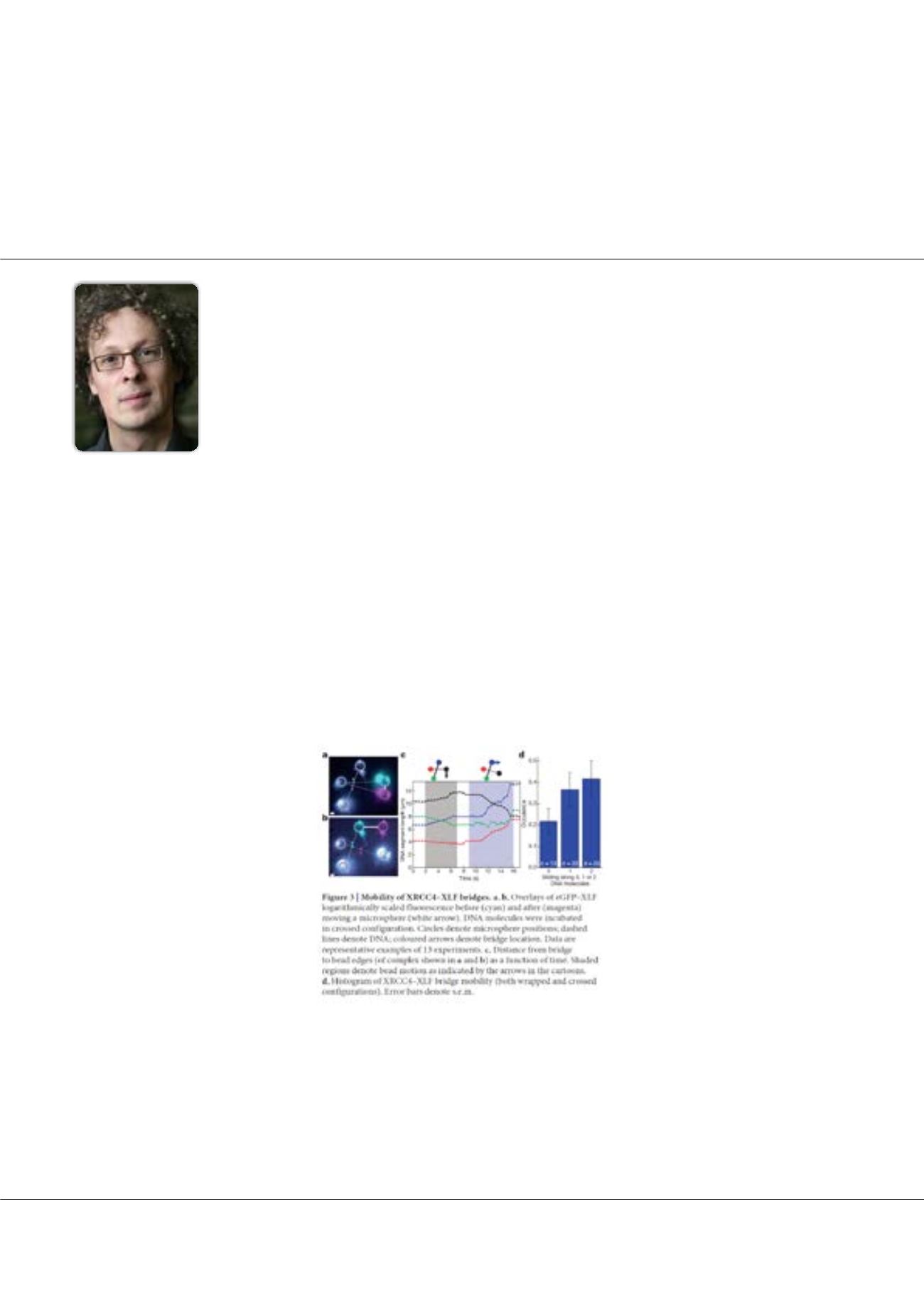

Volume 10, Issue 8 (Suppl)
J Proteomics Bioinform, an open access journal
ISSN: 0974-276X
Structural Biology 2017
September 18- 20, 2017
Page 37
conference
series
.com
9
th
International Conference on
Structural Biology
September 18-20, 2017 Zurich, Switzerland
Gijs Wuite, J Proteomics Bioinform 2017, 10:8(Suppl)
DOI: 10.4172/0974-276X-C1-0100
Sliding sleeves of XRCC4–XLF bridge DNA and connect fragments of broken DNA
N
on-homologous end joining (NHEJ) is the primary pathway for repairing DNA double-strand breaks (DSBs) in
mammalian cells. Such breaks are formed, for example, during gene-segment rearrangements in the adaptive immune
system or by cancer therapeutic agents. Although the core components of the NHEJ machinery are known, it has remained
difficult to assess the specific roles of these components and the dynamics of bringing and holding the fragments of broken
DNA together. The structurally similar XRCC4 and XLF proteins are proposed to assemble as highly dynamic filaments at
(or near) DSBs. Here we show, using dual and quadruple-trap optical tweezers combined with fluorescence microscopy, how
human XRCC4, XLF and XRCC4–XLF complexes interact with DNA in real time. We find that XLF stimulates the binding
of XRCC4 to DNA, forming heteromeric complexes that diffuse swiftly along the DNA. Moreover, we find that XRCC4–XLF
complexes robustly bridge two independent DNA molecules and that these bridges are able to slide along the DNA. These
observations suggest that XRCC4–XLF complexes form mobile sleeve-like structures around DNA that can reconnect the
broken ends very rapidly and hold them together. Understanding the dynamics and regulation of this mechanism will lead to
clarification of how NHEJ proteins are involved in generating chromosomal translocations.
Biography
Gijs Wuite obtained his PhD in Biophysics in 2000. Since 2001 he leads his own group at the VU University Amsterdam and in 2009 was appointed to full Professor. In his
research, he has successfully applied quantitative physical tools to investigate fundamental problems in biology, and to search for the unification of apparently unrelated
biological phenomena. Moreover, he has been at the front of recent new and fast developments of biophysical techniques that have enabled visualization, manipulation and
control of complex biological reactions. Based on this research work he founded in 2014 a company (LUMICKS) that sell the technology he and his group has developed.
His work has appeared in journal such as
Nature, Science, PNAS and Physical Review Letters
. His research has been awarded with the prestigious personal VIDI, VICI
and ERC grants. In 2009 Wuite was appointed member of the Young Academy, an independent platform of young top scientists within the Royal Netherlands Academy
of Arts and Sciences.
g.j.l.wuite@vu.nlGijs Wuite
Vrije Universiteit Amsterdam, The Netherlands


















